Review by Lutz Bendlin
 OtterBox are all about the big outdoors. They have provided protective cases for just about every electronic device worth using outdoors. Some of the cases are generic while others are tailored to a particular device. OtterBox are all about the big outdoors. They have provided protective cases for just about every electronic device worth using outdoors. Some of the cases are generic while others are tailored to a particular device.
The present review looks at the Impact and Commuter series protective cases for the Google Nexus One phone. Now, you may ask why we write a review about accessories for a phone that has already been discontinued (because, to speak in the words of the amazing Mr. Schmidt, "it was too successful")?
Truth is that we just hadn't got around to writing the review. On the other hand this is more about the solution approach that OtterBox have chosen. Here is what Kristin Golliher, OtterBox Public Relations Manager has to say about the situation:
"... as for OtterBox, we will continue to manufacture the cases as long as there is demand. We are also looking into options for the HTC Desire, I recommend customers keep checking our website, www.otterbox.com regularly to obtain up-to-date information on the latest cases we offer. As cases get closer to launch, we try to include an online sign up form where people can enter their email to be notified when cases become available. "
The HTC Desire is nearly identical to the Nexus One physically (except for the missing trackball maybe), and it seems to be selling rather well in quite a few countries.
Now that this is out of the way let's look at the actual cases. Both the Impact and the Commuter cases are more for the casual user. They provide some basic protection of the phone against drops, or foreign objects in your pockets (aka "keys"). They do not protect against water - for that OtterBox has different (and more expensive) offerings.
The Impact case
This is the most basic case. It is a one-piece silicon skin, available in all possible shades of black.

The Impact case has some structural elements like the side gripping pattern, holes for sensors, the speaker grille, and lights, and an interesting internal wafer buildup that we have already seen in other OtterBox cases.
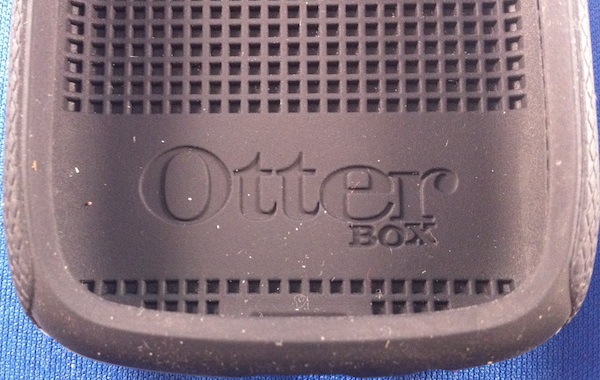
The front of the case also sports a elevated bezel that will protect the display to some extent (imagine the phone falling onto a concrete surface face down).
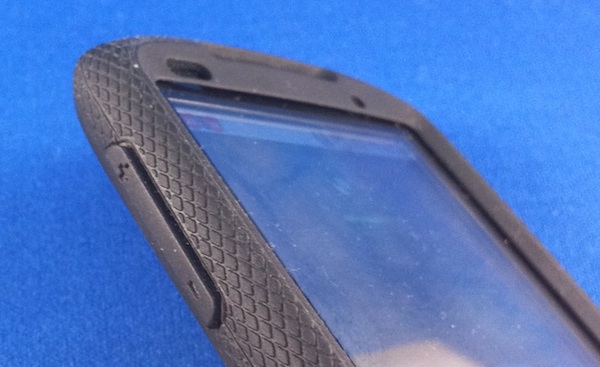
The left side shows the volume up/down buttons being accentuated for easier location, the same is done to the power button on the top. Neither the headphone jack nor the data/power port at the bottom are protected. As you can see this is different on the Commuter case (shown on top of the Impact case) where both areas are covered by retractable flaps)
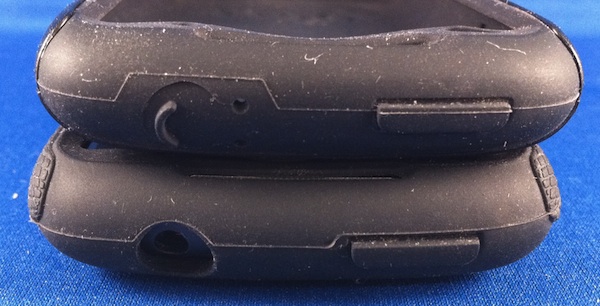
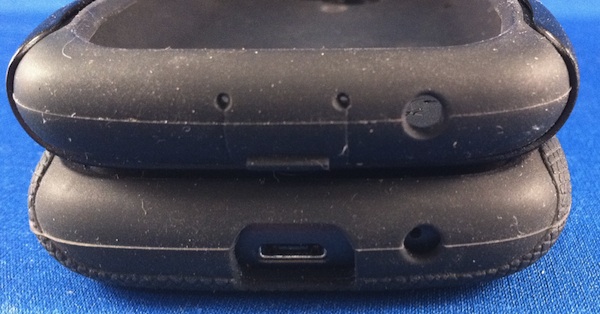
For me the advantage of the Impact case is the simplicity. It is very easy to apply and to remove. This is particularly important if you have a car mount for the Nexus One that expects a skin-less phone.
Another advantage is the guaranteed grip.
One of the disadvantages of that solution is actually this very same grip. The Impact case doesn't work well with pockets. It tends to get stuck too easily and instead of letting the phone slide into your pockets elegantly you'll have to be careful to shove it down there just right. Otherwise it might end up jumping out of the pocket again. (Thankfully the case will dampen the subsequent fall etc...)
The Commuter case
This is where the Commuter case comes in. It offers a bit less of a rubber buffer, but in exchange adds a hard plastic outer shell. The overall thickness of the case is very comparable to the Impact case, but the pocketability is much better.
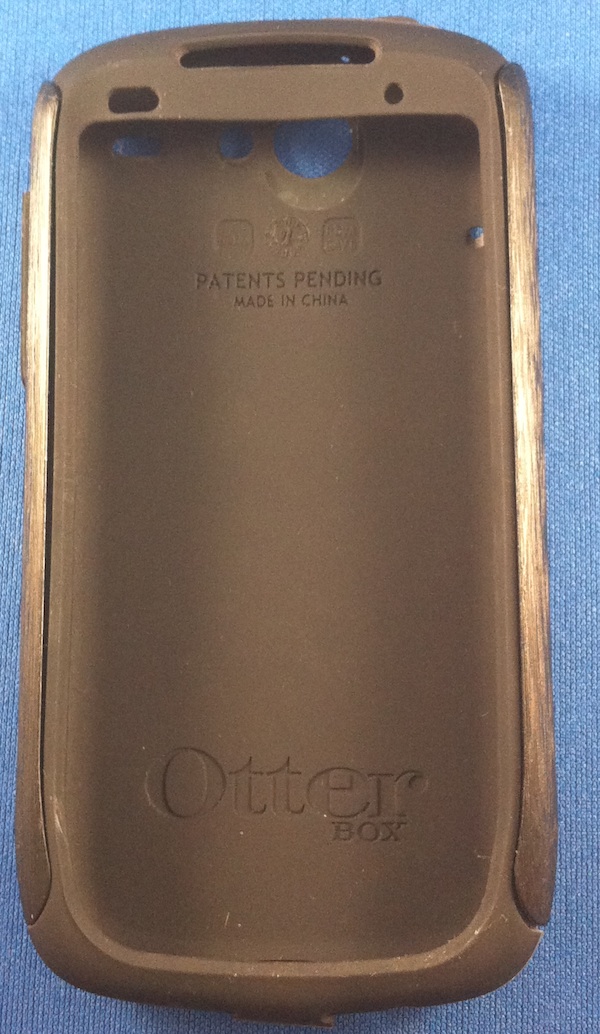
Here are both parts, shown separately
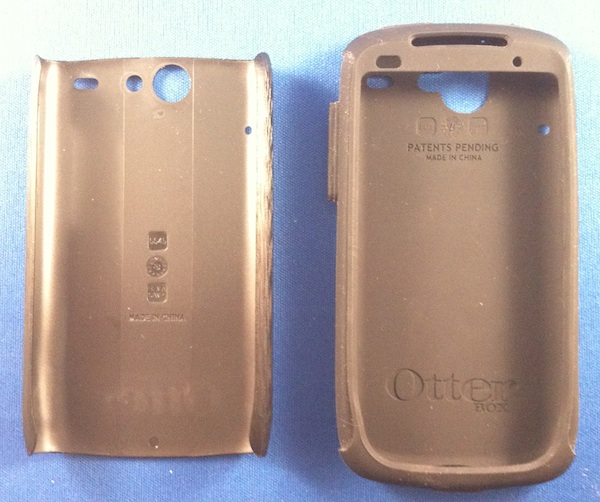
And here is how it looks in full.
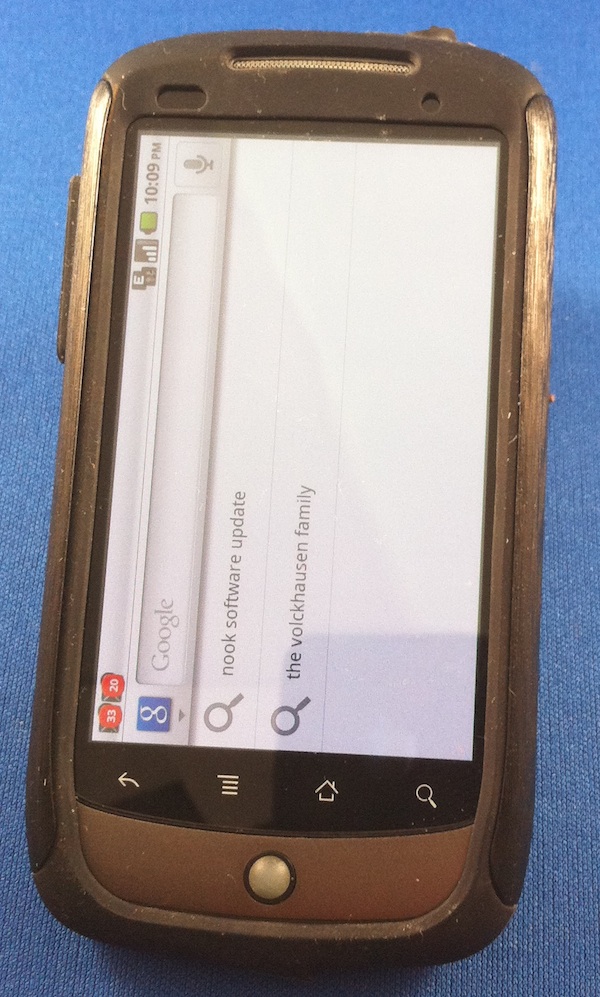
As already mentioned the data/power port is covered by a removable flap (the holes on either side are there to prevent the material from ripping when you open the flap). The microphone is not covered which makes sense from an acoustics perspective, but decreases the splash-resistance, and somewhat negates the data/power port flap.
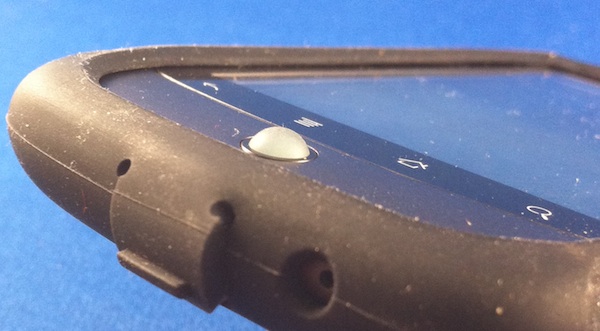
Here is another comparison of the backs
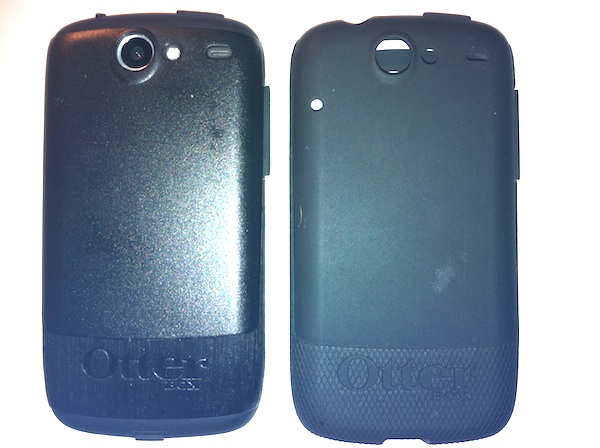
What's in the box
Both cases are sold in blister packs. Together with the two parts of the Commuter case you will get a screen protector, a screen cleaning cloth, instruction leaflet, and an actual installation card that will help you to apply the screen protector bubble-free. (You get all these items too with the Impact case). Like the Impact case the Commuter case is only available in black.
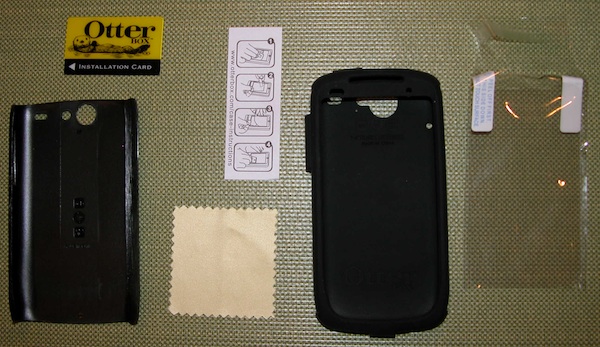
The improved pocketability of the Commuter case comes with a number of caveats. For one, it is more difficult to apply and to remove. It offers much less grip than the Impact case, and it is also "harder" as it does not offer the wafer cushion. I have not done any particular tests on that but I would say the Commuter case also offers a higher "drop it and it will slide just out of reach" factor.
Here are some short videos demonstrating the application and removal of each case.
- Impact on (14MB MOV)
- Impact off (9MB MOV)
- Commuter on (39MB MOV)
- Commuter off (18MB MOV)
|